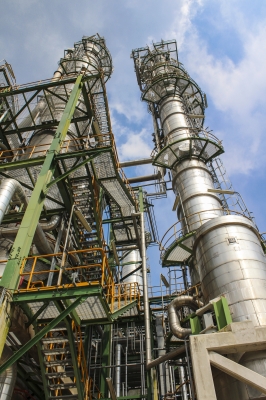David Sims posted on October 04, 2013 |
 U.S. carbon dioxide emissions are at their lowest levels in 20 years — thanks to the oil and gas industry.
U.S. carbon dioxide emissions are at their lowest levels in 20 years — thanks to the oil and gas industry.
“Oil and natural gas companies are America’s top investors
in zero- and low-greenhouse gas emissions (GHG) technologies,” according
to a new study released by API (American Petroleum Institute).
“America’s oil and natural gas companies have invested more
to reduce greenhouse gas emissions than the federal government and
almost as much as all other industries combined,” API Vice President for
Policy and Economic Analysis Kyle Isakower said recently in The Maritime Executive.
Oil And Gas: Half Of All Investment.
The study was conducted by T2 and Associates, and looked at
investment in GHG mitigation technology from 2000 through 2012. “During
that period, the U.S. oil and natural gas industry directly invested
approximately $81 billion in GHG mitigation technologies,” The Maritime
Executive reported. “Other U.S. industries invested an estimated $91.2
billion, and the federal government invested an estimated $79.7
billion.”
If you include shale investments, the amount credited to
the oil and natural gas industry expenditures on GHG mitigation balloons
to $165.4 billion, which is half of the total invested by all
industries and the federal government over that time.
Emissions of CO2 in the U.S. have been slowing for years. The Energy Information Administration (EIA) reported last
August that “energy-related greenhouse gas emissions in the United
States declined in 2011 by 2.9 percent compared to 2010 and an
additional 2.1 percent in 2012 compared to 2010.” Last year, emissions
were 705 million metric tons below the 2005 level, or 13 percent less,
and in fact, “energy-related carbon dioxide emissions have declined in
the United States in four out of the last six years.”
And the API suggests that the greenhouse gas reductions
achieved by the oil and gas industry are probably understated. “The
emission reduction estimates for 2008-2012 presented herein were
compiled strictly from company reports,” the institute notes, adding
that “there are indications that this summary of reported reductions is
an underestimate of actual reductions.”
In other words, the news is almost certainly better than
reported because “not all companies reported emission reductions, so the
reductions compiled here are likely conservative,” the API said.
Reductions in methane emissions reported in EPA’s Natural Gas STAR
program “are substantially greater than the total reported here,” and
“emissions reductions from substituting natural gas for coal are not
included in reported emission reductions by oil and gas companies, but
are significant in reducing overall emissions.”
In other words, what was counted is impressive, but there
are certainly other reductions that have not been tallied. It’s
interesting to note some of the reasons given for declines — and upticks
— in CO2 emissions. For instance, America’s GDP grew by 3.0 percent
last year, while “emissions increased by 3.9 percent,” which the API
attributed to increased use of coal-fired power to do the things that
gradually improving economies do. There was a decrease in the nation’s
GHG emissions in 2011, “primarily from mild weather and a declining
price of natural gas that caused fuel switching away from coal to
natural gas in the electric power sector,” as well as federal EPA
regulations forcing many to switch from coal to gas to generate
electricity.
Reduced Emissions? A Happy Byproduct.
The interesting thing is that reduced emissions aren’t
always the result of investments targeted specifically for that purpose.
Most of the investments made by the approximately 650 companies
involved in the API study “provide benefits in addition to any ability
to reduce greenhouse gas emissions, and were made for multiple reasons
including to increase or diversify energy supplies, or to improve
efficiency.”Case in point: Of all the investments made by the oil and
gas industry which reduced emissions, by far the largest one, $109
billion worth, accounting for 66 percent of the total invested, was in
fuel substitution — specifically, expanding shale gas development. Shale
gas emits less CO2 than other fuels, but it’s also a lot cheaper.
No comments:
Post a Comment